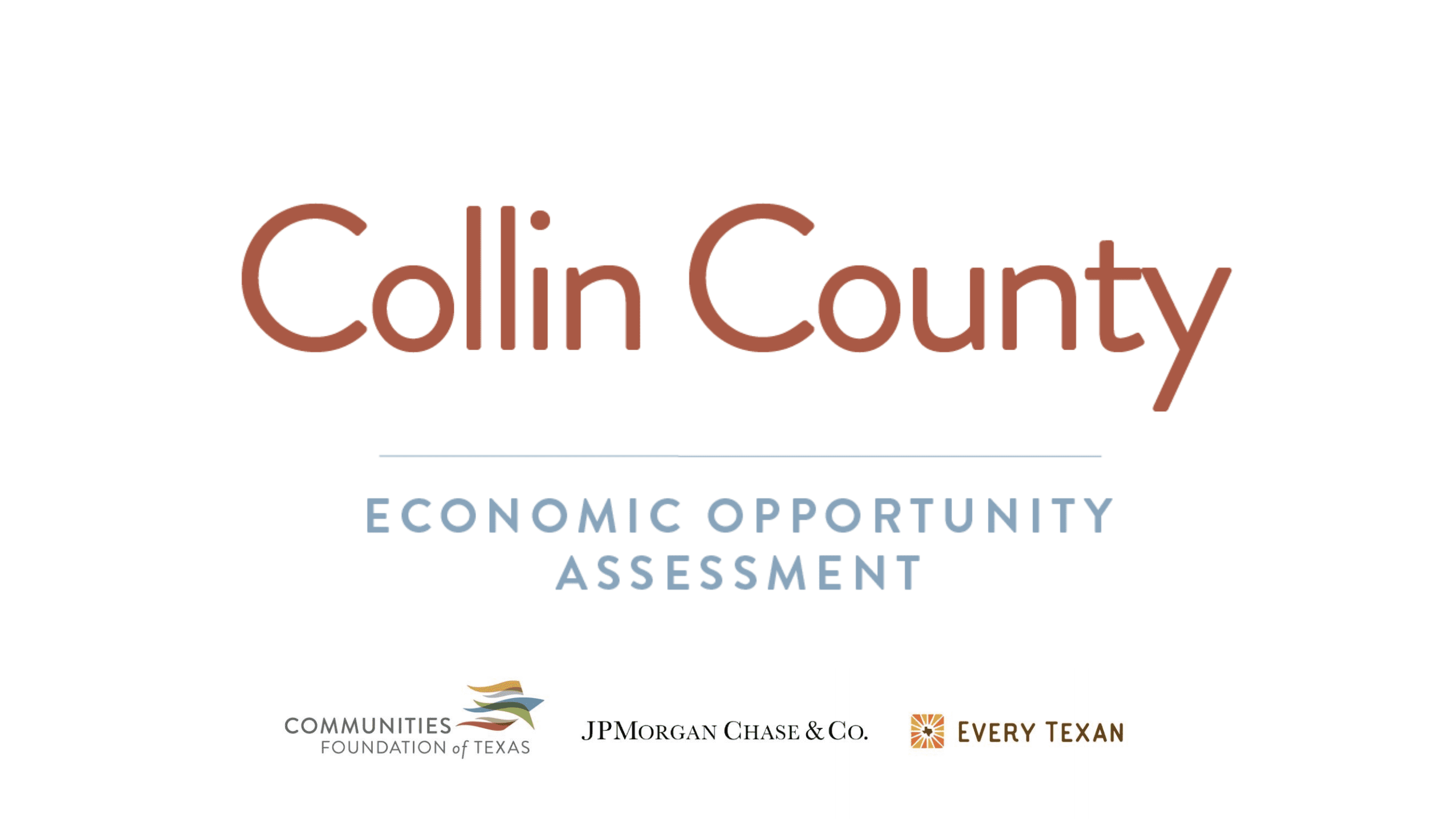Collin County is a rapidly growing community with many assets, including a young and diversifying workforce. But barriers to opportunity remain for residents based on race and ethnicity, income and wealth, and educational attainment. These barriers have been highlighted and exacerbated by the pandemic.
Today, Every Texan joined the Communities Foundation of Texas (CFT), in partnership with JPMorgan Chase, to launch a new report on economic opportunity in Collin County. Every Texan CEO Ann Beeson shared the data findings at a virtual event.
Read the full report here.
Highlights from the report include:
- Early economic indicators on the impact of the pandemic, including unemployment, health insurance coverage, and job sectors;
- Workers filed over eight times more unemployment claims than the previous March–September time period
- Demographic analysis of Collin County’s rapidly growing and changing population;
- The area’s Asian population is rapidly growing to become the largest group of color in Collin County, particularly its Indian and Chinese population
- Indicators of overall economic opportunity in terms of income, education, debt and assets;
- Although overall a relatively high-income region, the bottom fifth of earners in Collin County saw a six percent loss in real income since 2006.
- Nearly one in four K-12 students was economically disadvantaged, and they were three times as likely to drop out as other students in the county.
- Average college debt balances grew 20% in the past decade to an average of $37,000
- Discussion of the disparate access to economic opportunity in Collin County;
- By race and ethnicity — Black and Hispanic households are twice as likely to have zero (or negative) net worth as white and Asian households, leaving them vulnerable to unexpected expenses.
- By urban-rural divide — In some rural districts, as many as one in two students is economically disadvantaged.
- By city — In McKinney and Plano, one in ten children lacks health insurance coverage, higher than neighboring cities of Allen and Frisco.
- And policy recommendations to equitably advance economic opportunity in Collin County.
The Collin County report follows Communities Foundation of Texas’ 2018 comprehensive analysis of economic opportunity in Dallas County. The Dallas report, also conducted by Every Texan, catalyzed conversations about equity, access, and outcomes across the community. When the two organizations began working on a similar report for the Collin County community in 2019, no one could have imagined how much or how quickly things would change in just one year.
The original data pulled for this report now serves as a baseline, showing the community’s starting point pre-pandemic. Together with new data released since March, it is our hope that the collective data will inform policy and strategies going forward to ensure that all residents of Collin County can be healthy, well-educated, and financially secure.
While it’s too early to see the full impact of the pandemic on Collin County, the report provides some early economic indicators of how residents are faring in terms of employment, affected job sectors, and health insurance coverage. We believe it can be used to outline both existing strengths and opportunities for Collin County as we move forward in this new environment. We hope the report — and the discussion and actions it fosters — fuels creative solutions and strategies to help our communities move forward.
Read the full report here.
